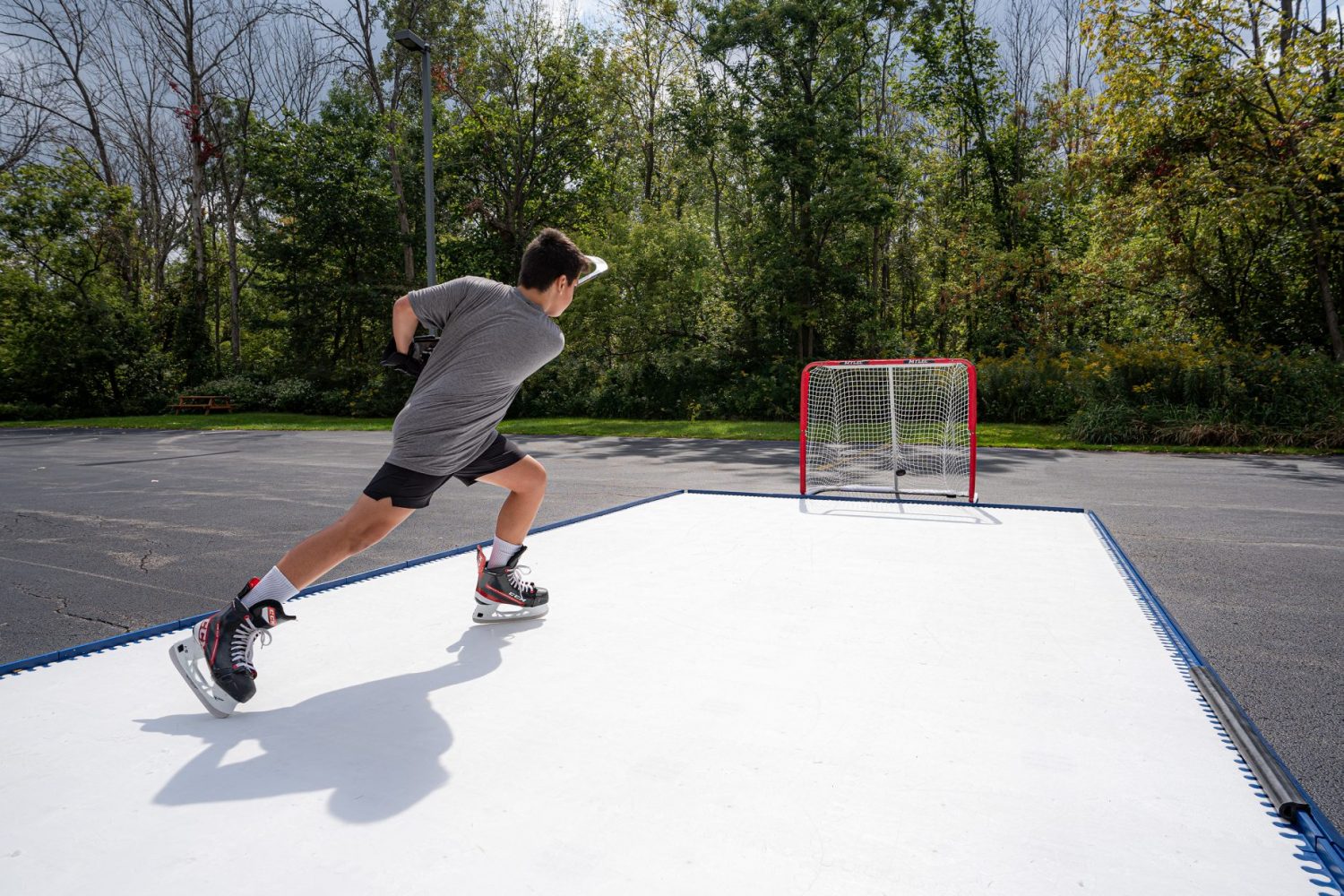The Future of Hockey Practice: Advantages of Synthetic Ice Surfaces

The landscape of hockey training is undergoing a transformative change with the advent of innovative training methods. Among these advances, synthetic ice surfaces are playing an increasingly vital role. Now more than ever, they provide a practical and convenient means for athletes to refine their skills off the rink. This expansion into home-based practice reflects a broader trend toward personalized and accessible sports training. By examining the technology behind synthetic ice, one can gain insights into its growing popularity and potential impact on the hockey world.
Key Takeaways:
- Synthetic ice surfaces facilitate at-home hockey training with ease.
- Regular practice on synthetic ice can lead to improved hockey skills over time.
- The innovation behind synthetic ice contributes to a near-authentic skating experience.
- Setting up a synthetic ice rink home is more affordable and environmentally friendly than maintaining natural ice.
Table of Contents:
- The Science Behind Synthetic Ice
- Transitioning from Traditional Ice to Synthetic
- Cost-Benefit Analysis of Synthetic Ice
- Training Advantages on Synthetic Ice
- Technological Advancements in Synthetic Ice
- The Environmental Impact of Synthetic Ice Rinks
- Injuries and Safety on Synthetic Ice
- Beyond Hockey: Other Uses for Synthetic Ice
- Preparing for the Future: Synthetic Ice in Athletic Training Programs
The Science Behind Synthetic Ice
Synthetic ice is composed of a high-density polyethylene or polymeric material that simulates the feel of natural ice. This modern marvel is engineered to withstand the rigors of skating, allowing blades to carve into the surface just as they would on a frozen pond. Though earlier versions of synthetic ice offered less glide and required more effort to maneuver, continuing innovations have reduced friction, providing a more natural skating experience. The precision with which this material is crafted today means that the differences between synthetic and traditional ice surfaces are becoming increasingly indistinguishable.
Transitioning from Traditional Ice to Synthetic
Skaters transitioning from ice to synthetic might observe a slight difference in resistance and were initially skeptical about its effectiveness as a training tool. However, athletes quickly realize the additional effort required to skate on synthetic ice translates into a strength-building advantage. The muscle memory developed on an artificial surface can enhance performance when returning to natural ice. Consistent practice on synthetic ice will ensure a seamless transition, sharpening skills that are directly transferable to the game environment.
Creating a personal skating space with synthetic ice is a straightforward process. It involves choosing quality panels that can easily interlock to form a seamless surface. The area designated for the rink must be flat and clean to accommodate the synthetic panels. Provision for expanding or modifying the rink in the future should also be considered.
Cost-Benefit Analysis of Synthetic Ice
The initial investment for synthetic ice is steep, but it proves to be economically viable when factoring in its longevity and low maintenance costs. Unlike natural ice, artificial ice does not require constant freezing, water replenishment, or electricity, which means utility savings over time. The longevity of synthetic ice surfaces can surpass years of intensive use, making them a one-time investment for consistent practice without the recurring expenses associated with traditional ice rinks.
Training Advantages on Synthetic Ice
Installing synthetic ice at home demolishes the barriers to practice frequency and duration, granting players the flexibility to train at their leisure. This leap forward in training convenience allows for focused skill development, such as honing skating techniques, puck control, and stamina. Regular training sessions on synthetic ice can result in measurable improvements not only technically but also in an athlete’s overall confidence and game readiness.
Technological Advancements in Synthetic Ice
Synthetic ice has not reached its zenith; it continues to evolve, leveraging new materials and technologies to elevate the skating experience. Pursuing the perfect synthetic ice involves:
- Enhancing resistance to wear and tear.
- Optimizing glide efficiency.
- Ensuring the material remains ecologically safe.
As materials science progresses, the prospects for better, more efficient synthetic ice become conceivable, pointing to a future where it could become indistinguishable from its frozen counterpart.
The Environmental Impact of Synthetic Ice Rinks
An eco-friendly alternative to refrigerated rinks, synthetic ice dramatically reduces water consumption and the carbon footprint associated with ice maintenance. The installation does not necessitate a cooling system, which can be resource-intensive and at odds with sustainability. Synthetic ice’s role in promoting environmentally responsible practices in the sports sector has gained recognition, as evidenced by its features and environmental implications.
Injuries and Safety on Synthetic Ice
There’s a common misconception that synthetic ice may lead to more injuries; however, research suggests that the risk is comparable to that on natural ice. Skaters should employ standard safety measures such as wearing protective gear and ensuring the synthetic ice surface is correctly installed and debris-free. Regular training with attention to technique can also prevent injuries, making practice on synthetic ice as safe as it is beneficial.
Beyond Hockey: Other Uses for Synthetic Ice
Synthetic ice extends well beyond hockey, serving the varied needs of different ice-related sports. It provides a year-round training ground for figure skaters, allowing them to perfect their jumps and spins without dependence on seasonal ice availability. Leisure skating, broomball, and curling enthusiasts also find synthetic ice an accommodating platform for their recreational pursuits, with its ability to be installed in diverse environments, including residential, commercial, and community spaces.
Preparing for the Future: Synthetic Ice in Athletic Training Programs
Future-proof, synthetic ice will become increasingly part of sports training regimens. Educational institutions already incorporate synthetic ice into their training facilities, recognizing its potential to increase on-ice training opportunities dramatically. This trend is set to continue as the benefits of synthetic ice—consistent availability, reduced operational costs, and environmental friendliness—align with the evolving demands of sports training and the industry’s push toward sustainable practices.




